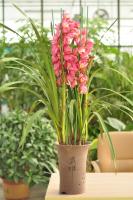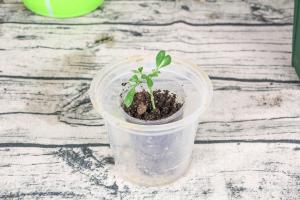How to Plant Wild Rice in Water
Wild rice is a highly nutritious grain that can be grown in a variety of ways. One of the most popular methods of growing wild rice is in water. Planting wild rice in water can be a bit more complicated than other forms of rice cultivation, but with the right preparation, it can yield a bountiful harvest.
1. Choose the Right Location
The first step in planting wild rice in water is to choose the right location. Wild rice grows best in shallow water, about one to two feet deep. Look for an area with consistent water levels and a muddy bottom. You can plant wild rice in natural bodies of water, such as ponds or lakes, or create your own rice paddy using an artificial pond.
2. Prepare the Rice Seeds
The next step is to prepare the wild rice seeds for planting. Soak the seeds in water for 24 hours to help soften the shell and promote germination. Once the seeds have been soaked, drain the water and rinse the seeds several times to remove any debris or unwanted elements. The wild rice seeds are now ready for planting.
3. Plant the Wild Rice Seeds
Planting the wild rice seeds is the most challenging part of the process. It is essential to be very careful when planting the seeds to ensure that they grow properly. Spread the seeds evenly across the bottom of the planting area. To help the seeds settle in the mud, gently rake the surface of the water with a rake or your hands. Be careful not to disturb the seeds too much or they may not germinate.
4. Tend to the Wild Rice Plants
Once the wild rice plants start to grow, it is important to monitor and maintain them regularly. Keep the water level steady and avoid sudden changes in water depth, which can harm the plants. Remove any weeds or unwanted plants that may grow in the water, as they can steal nutrients and resources from the wild rice plants. Maintain the temperature of the water and avoid using pesticides or other chemicals that can harm the plants.
5. Harvest the Wild Rice
After about three months, the wild rice will be ready to harvest. The rice plants will have long, slender stalks with clusters of rice grains at the top. Cut the stalks at the base, being careful not to disturb the roots too much. Place the cut stalks in a bin or large bucket and thresh the rice seeds by rubbing them between your hands. Once the rice has been threshed, rinse it with water to remove any debris or unwanted elements.
Conclusion
Planting wild rice in water can be a challenging but rewarding process. With the right preparation, location, and care, you can cultivate your own supply of nutritious wild rice. It is an excellent crop for those who are looking to try something new or those who want to grow their own food sustainably.

 how many times do yo...
how many times do yo... how many planted tre...
how many planted tre... how many pine trees ...
how many pine trees ... how many pecan trees...
how many pecan trees... how many plants comp...
how many plants comp... how many plants can ...
how many plants can ... how many plants and ...
how many plants and ... how many pepper plan...
how many pepper plan...






























